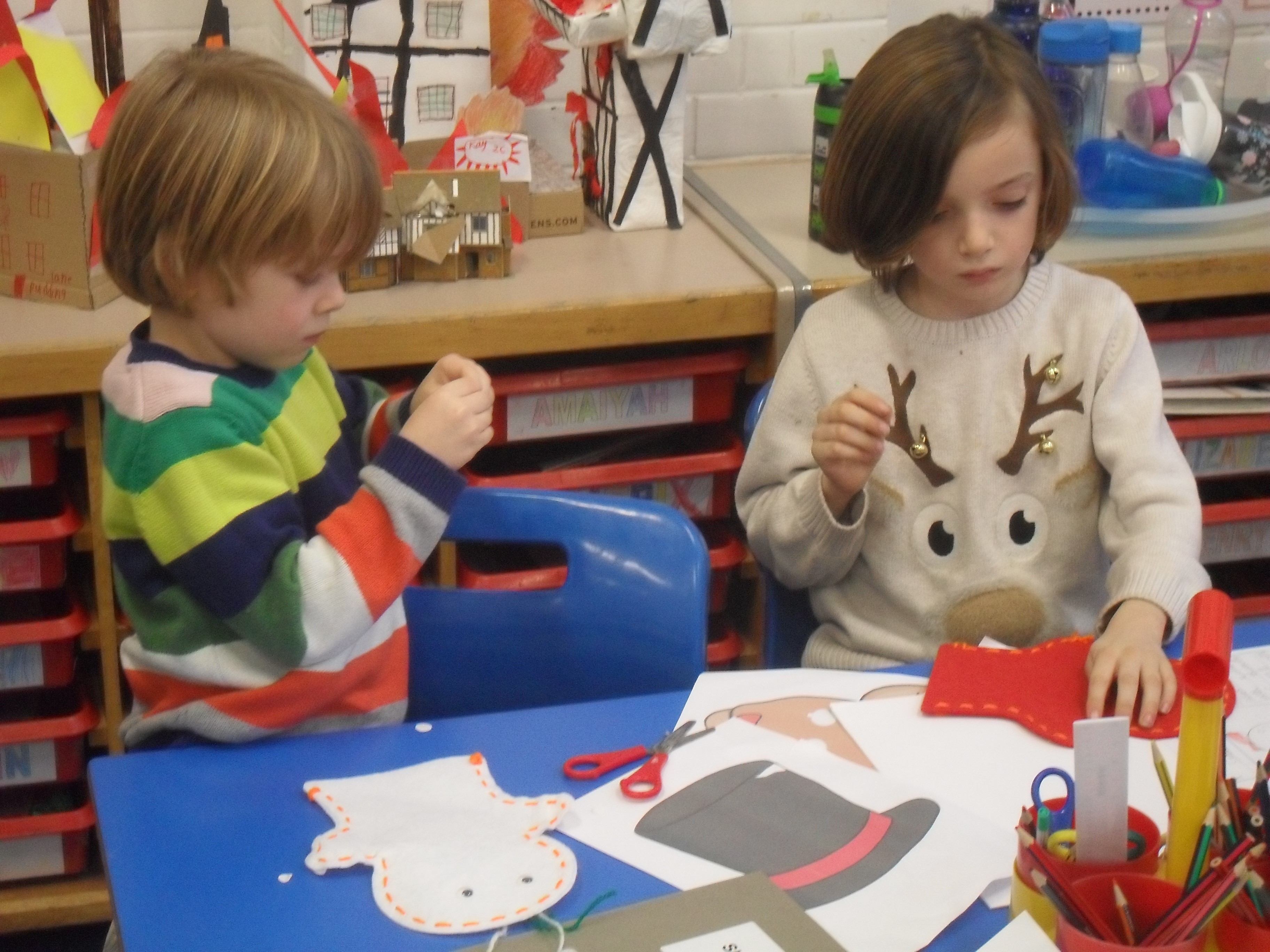Address:
William Patten Primary School
Stoke Newington Church Street
London N16 0NX
Office Manager: Rita Quigley
SENDCo: Caitlin Shaw
William Patten Primary School
Stoke Newington Church Street
London N16 0NX
Office Manager: Rita Quigley
SENDCo: Caitlin Shaw

Intent
Design and Technology is an inspiring, rigorous and practical subject. Design and Technology encourages children to learn to think and intervene creatively to solve problems both as individuals and as members of a team. At William Patten, we encourage children to use their creativity and imagination, to design and make products that solve real and relevant problems within a variety of contexts, considering their own and others’ needs, wants and values. We aim to, wherever possible, link work to other disciplines such as mathematics, science, engineering, computing and art. The children are also given opportunities to reflect upon and evaluate past and present design technology, its uses and its effectiveness and are encouraged to become innovators and risk-takers.
Implementation
Through a variety of creative and practical activities, we teach the knowledge, understanding and skills needed to engage in an iterative process of designing and making. The children design and create products that consider function and purpose and which are relevant to a range of sectors (for example, the home, school, leisure, culture, enterprise, industry and the wider environment).
When designing and making, the children are taught to:
Design
Make
Evaluate
Develop, Use and Apply Technical Knowledge
Key skills and key knowledge for D and T have been mapped across the school to ensure progression between year groups. The context for the children’s work in Design and Technology is also well considered and children learn about real life structures and the purpose of specific examples, as well as developing their skills throughout the programme of study. Design and technology lessons are also taught as a block so that children’s learning is focused throughout each unit of work.
Each new unit of work begins with a recap of the previous related knowledge from previous years. This helps children to retrieve what they have learnt in the earlier sequence of the programme of study, and ensures that new knowledge is taught in the context of previous learning to promote a shift in long term memory. Key vocabulary for the new topic is also introduced as part of this ‘unit introduction’ and children are shown the ‘Topic Vocabulary (TV) Mat. This provides definitions and accompanying visuals for each word to ensure accessibility to all. This approach also means that children are able to understand the new vocabulary when it is used in teaching and learning activities and apply it themselves when they approach their work.
The KWL process is used throughout each unit of work. Once children know the new vocabulary for the unit and how it relates to previous learning, the children are asked what they already know specifically about the new topic. This provides the teacher with an insight into the children’s ‘starting points’ for the topic, to enable the use of assessment to inform planning. The children are then also asked what they would like to know and class responses are collated and used to inform the programme of study to ensure an aspect of ‘focussed interest planning’. A record of this process kept in children’s books. At the end of the topic, children write a summary of what they know according to the key knowledge statements identified on the school’s progression map for design and technology (as worded on the TV Mat of the topic). Teachers support the children and scaffold this ‘knowledge summary’ as appropriate, according to the children’s age group as well as individual needs. This process is used to consolidate the key knowledge of the topic and each strand of knowledge included in the outcomes is ticked or highlighted.
Within all sequences of lessons, teachers plan a phase of progressive questioning which extends to and promotes the higher order thinking of all learners. Questions initially focus on the recall or retrieval of knowledge. Questions then extend to promote application of the knowledge in a new situation and are designed to promote analytical thinking, such as examining something specific. In design and technology, an example of this level of questioning might ask children to consider how a mechanical system (such as gears and pulleys) might speed up, slow down or change the direction of movement. The questions that teachers ask within the same lesson phase, then focus on the children’s own work and how they might change or create an outcome and justify a choice they have made which is based on their evaluation.
Impact
We ensure the children:
Children learn how to take risks, becoming resourceful, innovative, enterprising and capable citizens. Through the evaluation of past and present design and technology, they develop a critical understanding of its impact on daily life and the wider world. High-quality design and technology education makes an essential contribution to the creativity, culture, wealth and well-being of the nation.